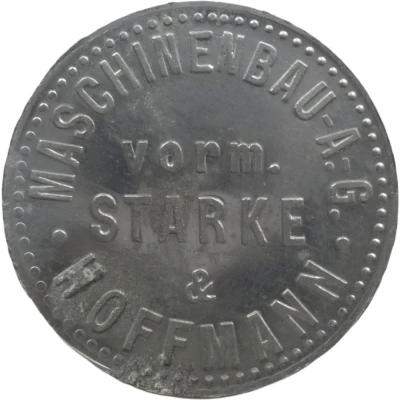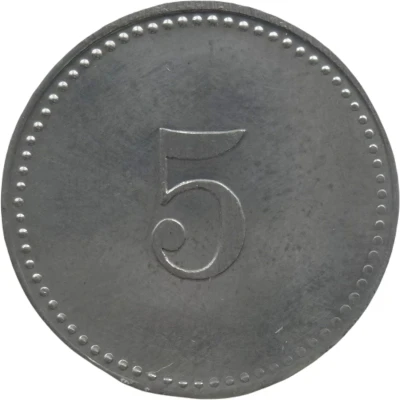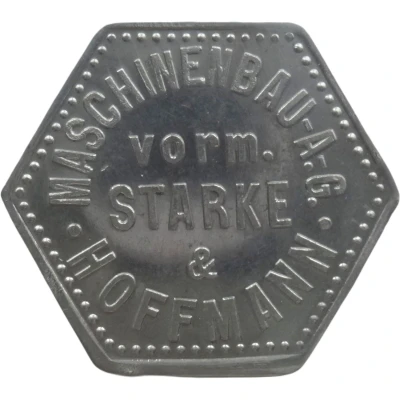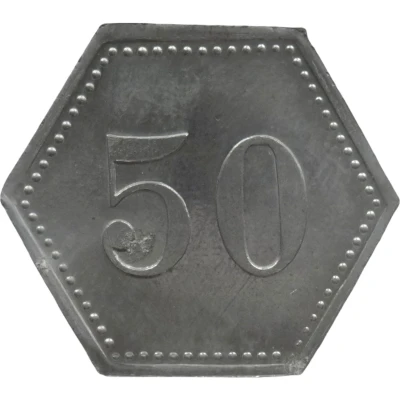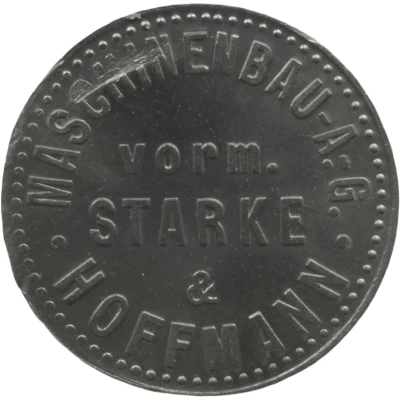
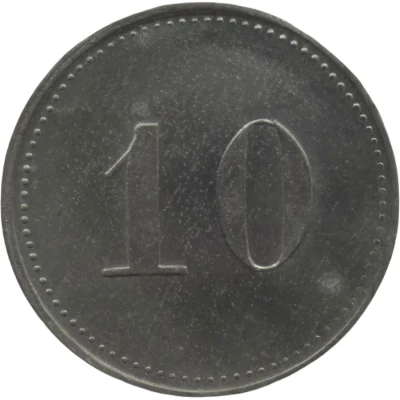

© Willem63 (CC BY-NC-SA)
10 Pfennigs - Hirschberg (Maschinenbau AG. vorm. Starke and Hoffmann) ND
| Zinc | 3.1 g | 23.5 mm |
| Issuer | City of Hirschberg (Lower Silesia) (Prussian province of Lower Silesia) |
|---|---|
| Type | Standard circulation coin |
| Value | 10 Pfennigs (10 Pfennige) (0.10) |
| Currency | Mark (1914-1924) |
| Composition | Zinc |
| Weight | 3.1 g |
| Diameter | 23.5 mm |
| Thickness | 1.3 mm |
| Shape | Round |
| Technique | Milled |
| Orientation | Medal alignment ↑↑ |
| Demonetized | Yes |
| Updated | 2024-10-04 |
| Numista | N#339551 |
|---|---|
| Rarity index | 97% |
Reverse
Pearl rim, denomination centered
Script: Latin
Lettering: 10
Edge
Plain
Comment
Menzel: BBBInteresting fact
One interesting fact about this coin is that it was minted during a time of great economic and political change in Germany. The 10 Pfennigs coin was introduced in 1924 as part of a new currency reform aimed at stabilizing the German economy after the hyperinflation of the early 1920s. The coin's design, featuring a deer on the obverse and the value and mint mark on the reverse, was meant to symbolize the connection between nature and industry in the region of Lower Silesia, where the coin was minted. The use of zinc as the material for the coin was also a deliberate choice, as it was a more affordable and durable alternative to traditional metals like silver or gold. Despite its humble design and material, the 10 Pfennigs coin played an important role in the everyday lives of Germans during this time, serving as a symbol of hope and stability in a period of great economic uncertainty.
